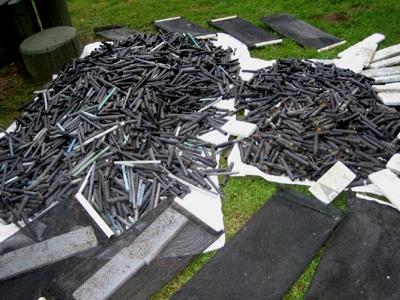Barely a week after Point Reyes National Seashore officials released a draft environmental analysis assessing whether an oyster company was harming the seashore's waters, allegations have been raised that the company has been dumping debris in the waters.
Also coming to the surface are photos purportedly showing that on at least 20 days during the harbor seal pupping seasons during April and May of 2008 and 2009 Drakes Bay Oyster Co. boats were in Drakes Estero waters that were supposed to be off-limits to boating at the time.
The charges are contained in a letter the California Coastal Commission sent the oyster company's owner, Kenny Lunny, on Sept. 29 asking to meet with him over the latest developments.
"Marine debris, especially plastics, and the use of motorized vessels near sensitive harbor seal areas pose serious threats to marine habitats and wildlife, and we are concerned about these issues in Drakes Estero," reads the letter (attached below), which was signed by Jo Ginsberg, the commission's enforcement analyst. "I am therefore writing to you to share these concerns and to request that we set up a meeting soon to discuss them and develop some possible solutions."
Drakes Estero long has been viewed for designation as official wilderness -- the 1976 legislation that set aside 25,370 acres of the seashore as wilderness cited another 8,003 acres that would be "essentially managed as wilderness, to the extent possible, with efforts to steadily continue to remove all obstacles to the eventual conversion of these lands and waters to wilderness status" -- and the oyster operation is seen as being incompatible with such a designation.
While the existing 40-year lease for the operation was scheduled to sunset on Nov. 30, 2012, congressional legislation passed in 2009 gave Interior Secretary Ken Salazar the authority to extend it beyond that date. In the wake of that legislation, the Park Service moved to conduct an environmental impact statement to judge whether the operation was adversely impacting the estero.
The debris collected within the seashore the past three weeks includes more than 700 "pieces of plastic debris that appear to have originated from DBOC, including black spacer tubes, small-mesh, grow-out bags, and polystyrene flotation blocks," the commission's letter said.
This marks at least the second time the commission has contacted Mr. Lunny about his operations stretching beyond their approved cultivation area and into sensitive harbor seal waters. Back in December 2009 the commission sent him a "cease and desist" letter (attached below), charging that his operation was cultivating clams outside of its designated area, and that its "boats, personnel, structures, and materials for the cultivation of Manila clams were brought into a habor seal protection area that was established specifically to protect the sensitive resources within it..."




Comments
A good majority, if not all, of the plastic tubings are left over from the previous owners, the Johnson Oyster Company. The Lunny family has drastically changed the operating methods of the farm and are working with local regulators to better this every day. There is not enough evidence to support theories of adverse environmental impact the company has had. Closure of the company would be draconian environmentalism, simple and plain. We need to work with nature, not separate ourselves from it. With the unavoidable growing demand for seafood, we should be replicating DBOC's practices, not eradicating them. Closing DBOC would do more global environmental harm from having to use non-local sources. Extend the users permit for another 10 years until further research is done. It would be irresponsible management otherwise.